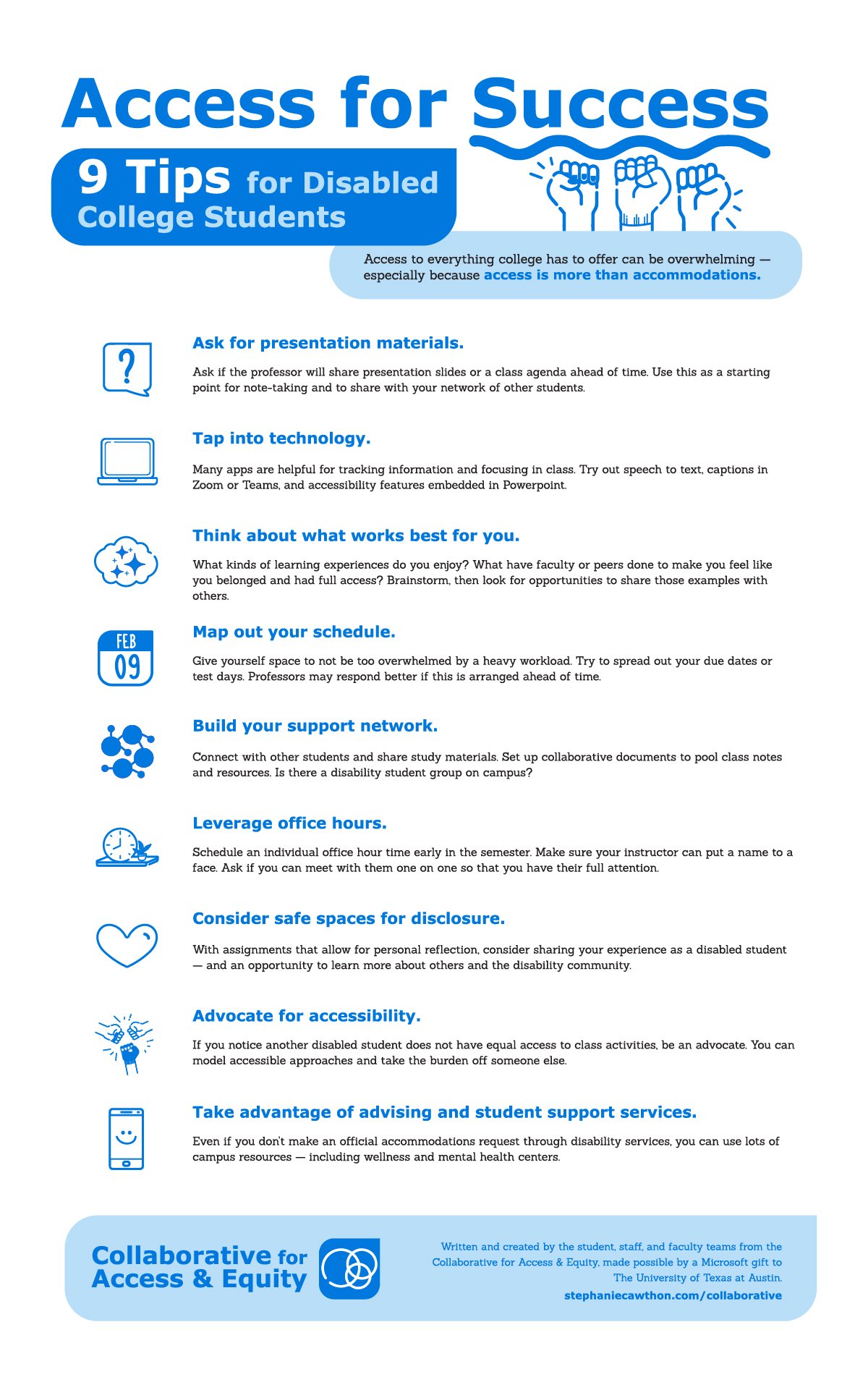Access for Success: 9 Tips for Disabled College Students [Infographic]
For disabled college students, access to everything college has to offer can be overwhelming — especially because access is more than accommodations.
These nine tips can help. They were created and written by the student, staff, and faculty teams — many of whom are disabled themselves — from the Collaborative for Access & Equity, an innovative program designed to improve accessibility, equity, and inclusion for disabled college students.
Are you a faculty member, instructor, or student services specialist? Check out the Collaborative’s other infographic, Make Access Easy: 9 Strategies for Higher Education Faculty.
Infographic Content
1. Ask for presentation materials. Ask if the professor will share presentation slides or a class agenda ahead of time. Use this as a starting point for note-taking and to share with your network of other students.
2. Tap into technology. Many apps are helpful for tracking information and focusing in class. Try out speech-to-text, captions in Zoom or Teams, and accessibility features embedded in Powerpoint.
3. Think about what works best for you. What kinds of learning experiences do you enjoy? What have faculty or peers done to make you feel like you belonged and had full access? Brainstorm, then look for opportunities to share those examples with others.
4. Map out your schedule. Give yourself space to not be too overwhelmed by a heavy workload. Try to spread out your due dates or test days. Professors may respond better if this is arranged ahead of time.
5. Build your support network. Connect with other students and share study materials. Set up collaborative documents to pool class notes and resources. Is there a disability student group on campus?
6. Leverage office hours. Schedule an individual office hour time early in the semester. Make sure your instructor can put a name to a face. Ask if you can meet with them one on one so that you have their full attention.
7. Consider safe spaces for disclosure. With assignments that allow for personal reflection, consider sharing your experience as a disabled student — and an opportunity to learn more about others and the disability community.
8. Advocate for accessibility. If you notice another disabled student does not have equal access to class activities, be an advocate. You can model accessible approaches and take the burden off someone else.
9. Take advantage of advising and student support services. Even if you don’t make an official accommodations request through disability services, you can use lots of campus resources — including wellness and mental health centers.
The Collaborative for Access & Equity is made possible by a Microsoft grant to The University of Texas at Austin.
